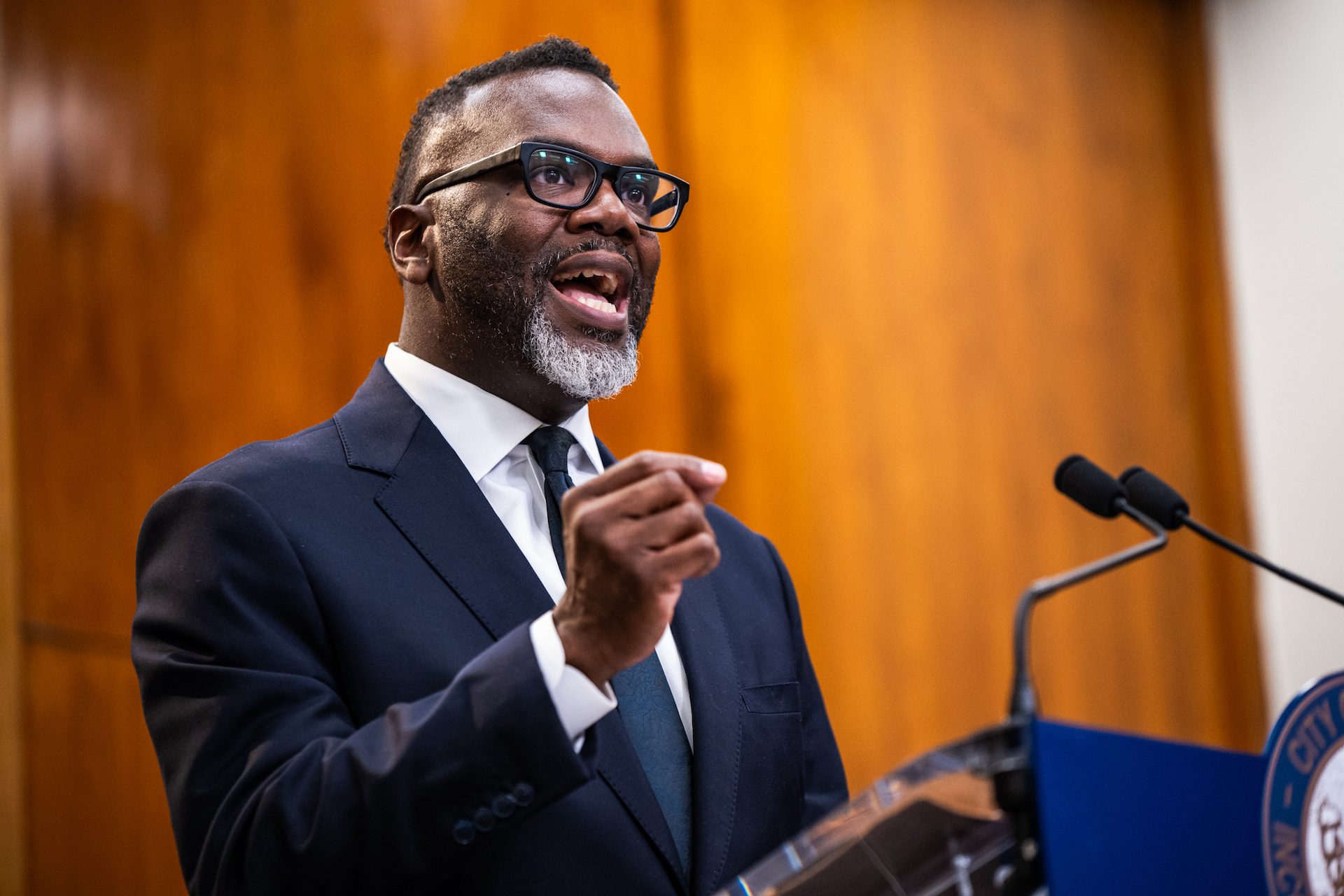 Mauricio Pena/Borderless Magazine
Mauricio Pena/Borderless MagazineThe new system will offer 6,800 beds despite a projected need for 11,000 spaces for all Chicagoans experiencing homelessness.
Chicago will stop allocating new resources for migrant shelters as it merges its new arrival and homeless shelter systems by 2025.
During a press conference Monday, city officials detailed plans for its “One System Initiative,” which include reducing resources for migrants while streamlining access to services for all residents at risk of homelessness. The rollout will begin this week and run through the end of the year.
The city’s “One System Initiative” aims to address long-standing inequities in shelter systems by combining them into one comprehensive service network, according to city officials.
News that puts power under the spotlight and communities at the center.
Sign up for our free newsletter and get updates twice a week.
“We are building a single shelter system that allows us to respond to homelessness… whether you have just arrived or whether you’ve been here for some time and you’re down on your luck,” said Mayor Brandon Johnson.
Last month, city and state officials announced recommendations for the merger after gathering feedback from community organizations. Under the plan, city officials will add 3,800 beds from the migrant shelter system to the 3,000 beds currently offered for individuals experiencing homelessness. About 5,000 new arrivals are currently being housed across the city’s migrant shelters.
Johnson said there was a projected need for “as many as 11,000 shelter beds to serve all Chicagoans experiencing homelessness, including our new arrivals.”

When asked about concerns on whether more beds will be available in the future, city officials stated that further investment was needed before additional shelter beds would be available in the new system.
City and state officials also plan to open a new shelter in Rogers Park by December. The new and existing migrant shelters would be operated by community organizations, replacing the controversial vendor Favorite Staffing, who has overseen many of the migrant shelters in Chicago.
“Right now, we have about 557 Favorite staff,” said Brandie Knazze, commissioner of Chicago’s Department of Family and Support Services. “And so as we close out this mission, we will close out the Favorite contract as well.”
Read More of Our Coverage
Other changes include:
- Creating a system to request shelter beds through the city’s 311 service on a first-come, first-serve basis
- Reducing hours at the New Arrival Landing Zone by Nov. 1 and closing the Landing Zone and State Intake Center by Dec. 31
- Eliminating 30-day shelter extensions for anyone waiting to hear back on their applications for public benefits
- Limiting new shelter availability for migrants who have arrived in the U.S. within the past 30 days
City officials explained the decision to wind down the migrant shelter system and begin investing in a unified system comes as the number of new arrivals entering Chicago has decreased in recent months.
“We know that it is the right time,” said Beatriz Ponce de León, the city’s deputy mayor for Immigrant, Migrant and Refugee Rights. “The city has not received a bus in the area since mid-June, and arrivals at the Landing Zone are much lower.”
As part of the new plan, the city and state will also reinstate its rental assistance program to help with the housing needs of shelter residents.
The city could face challenges when implementing this new system. Community members previously cited struggles in accessing a shelter bed due to the lack of availability in the city’s homeless shelter system and challenges in using 311 services to request a shelter bed, according to the previously released recommendations.
“People with lived experience have identified challenges and barriers with this process [to access a shelter bed in the city’s existing homeless shelter system], citing difficulty getting connected to a shelter,” according to the One System Initiative report released last month.
Mayor Johnson said more details regarding the combined system’s potential budget would be available after the city finalizes its budget for the next fiscal year.
Katrina Pham is Borderless Magazine’s audience engagement reporter. Email Katrina at [email protected].
Fatema Hosseini is a Roy W. Howard Investigative Reporting fellow covering immigrant communities for Borderless Magazine. Send her an email at [email protected]


